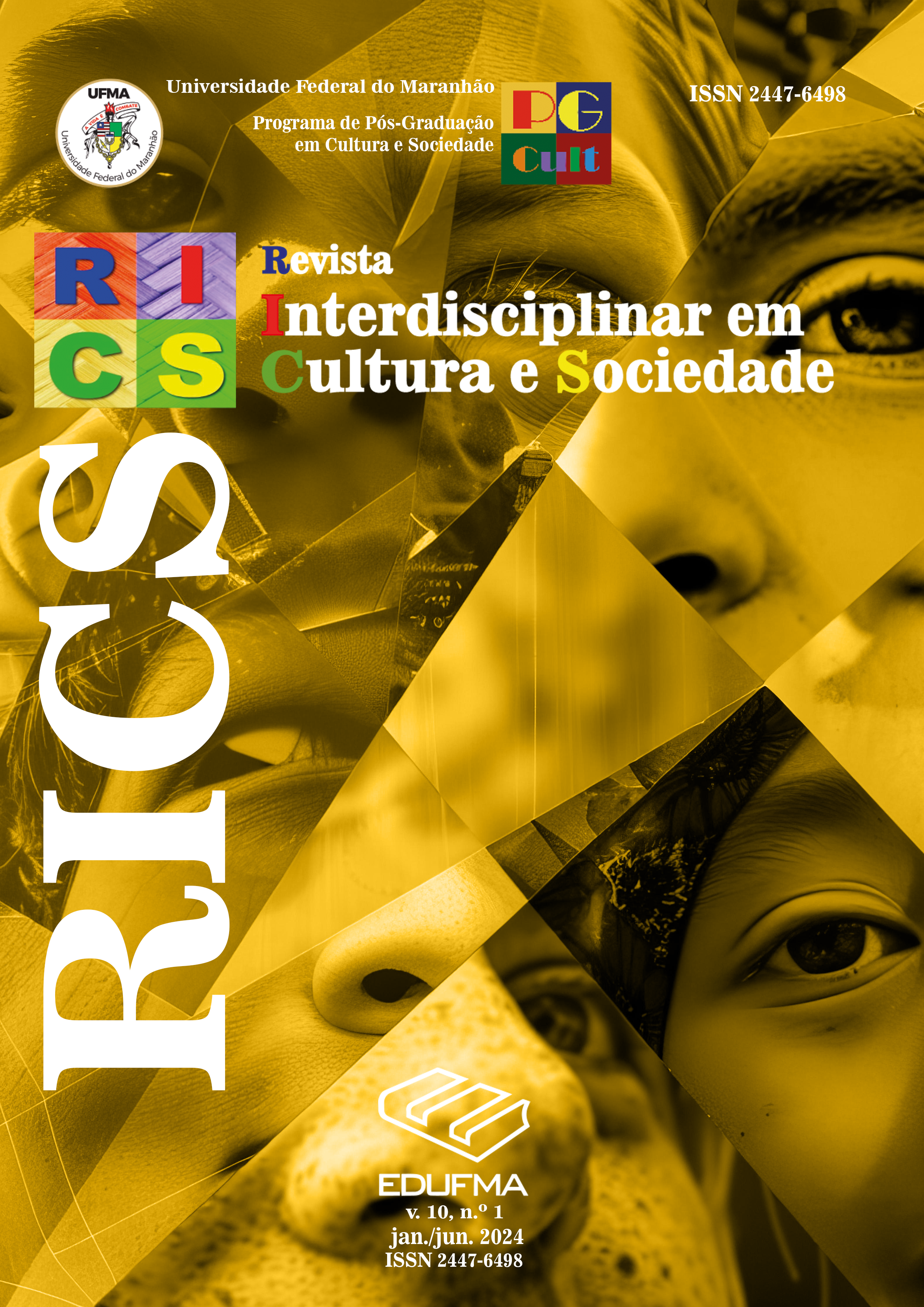Best practices for developing effective communication campaigns to promote Support Technology Resource Centers
DOI:
https://doi.org/10.18764/2447-6498.v10n1.2024.4Keywords:
Special Needs., Assistive Technology., Accessibility., Resource Center., Communication., Promotion.Abstract
The existence of Resources Centers for Assistive Technology (RCAT), which provide access to equipment and support services to the population with special needs, provides great opportunities to improve autonomy, independence, accessibility, communication, and, consequently, quality of life. To increase access and understanding of assistive technology, it is important to promote and publicize these centers effectively. In this sense, well-designed effective communication campaigns can allow more people to be aware of the existence of RCAT, their functions and benefits, allowing them to become fully involved in society. Based on a literature review, this exploratory study of a qualitative nature, identified strategies and best practices favorable to the creation of communication campaigns for RCAT, enabling their promotion and awareness. The main results show that the proper application of these practices is crucial to make these centers known and used by the community. The strategies identified relate to the planning, development, and implementation of these campaigns, allowing for guidance in the development of campaigns of this type. Thus, we conclude that it is important to promote RCAT, and that their proper dissemination is fundamental so that more people can have access to these services.
Downloads
References
ASSISTIVE TECHNOLOGY ACT OF 2004. Public Law 108-364. 118 Stat., 1707, 25 out. 2004.
ASSISTIVE TECHNOLOGY INDUSTRY ASSOCIATION (ATIA). What is AT?. [S. l.]: [s.n.], c.2023. Disponível em: https://www.atia.org/home/at-resources/what-is-at/ Acesso em: 16 jan. 2023.
ATKIN, Charles. Persuasive strategiees in health campaigns. SAGE Publications, Inc. 2012.
BYRNE, Erin; KEARNEY, John; MACEVILLY, C. J. The role of influencer marketing and social Influencers in public health. Proceedings of Nutrition Society, v. 76, n. OCE3, E103, jun. 2017.
BULLOCK, Olivia; SHULMAN, Hillary; Huskey, Richard. Narratives are Persuasive Because They are Easier to Understand: Examining Processing Fluency as a Mechanism of Narrative Persuasion. Frontiers in Communication, v. 6, set. 2021.
CADAXA, Aedê Gomes; SOUSA, Maria Fátima de; MENDONÇA, Ana Valéria Machado. Conteúdos promotores de saúde em campanhas de Aids no Facebook dos ministérios da saúde do Brasil e do Peru. Revista Panamericana de Salud Publica. v. 38, n. 6, p. 457-463, dez. 2015.
CARDOSO, Patrícia Maria da bela; BRANDÃO, Nuno Goulart. Campanha de comunicação em saúde – estudo de caso: “A Pele que tenho em mim” da Novartis Farma. XVI Congresso IBERCOM, São Paulo, p. 3902- 3926, nov. 2019.
CARDOSO, Rita Jorge Moita. A influência do storytelling (estrutura da narrativa) nas perceções, atitude e comportamento dos consumidores. Dissertação de Mestrado em Marketing Relacional – Instituto Politécnico de Leiria, Escola Superior de Tecnologia e Gestão, Leiria, 2017.
CASE-SMITH, Jane. Occupational therapy for children. 5. ed. St. Louis: Elsevier Mosby, 2005.
CENTERS FOR DISEASE CONTROL AND PREVENTION. Health Communication. [S. l.]: [s. n.], c.2023). Disponível em: https://www.cdc.gov/healthcommunication/ Acesso em: 12 jan. 2023.
CHICAGO PUBLIC SCHOOLS. Assistive Technology Resource Center. [S. l.]: [s. n.], c.2023). Disponível em: http://www.cps.edu/services-and-supports/special-education/related-services-and-providers/assistive-technology-resource-center/ Acesso em: 16 jan. 2023.
CHILDREN’S CENTER FOR THE VISUALLY IMPAIRED (CCVI). Marketing Plan. [S. l.]: [s. n.], 2014, Disponível em: https://kuscholarworks.ku.edu/bitstream/handle/1808/15002/CCVI%20Marketing%20Plan_FINAL.pdf;sequence=1 Acesso em: 11 jan. 2023.
CHOU, Wen-ying Sylvia; PRESTIN, Abby; LYONS, Claire; WEN, Kuang-yi. Web 2.0 health promotion: reviewing the current evidence. American Journal of Public Health, v. 103, n. 1, p. 9-18, jan. 2013.
COHEN, Matthew. Overcoming Barriers to Inclusion of Children with Disabilities in the Local Schools - A Blueprint for Change. Illinois Planning Council on Developmental Disabilities, 1994.
DAHLSTROM, Michael. The narrative truth about scientific misinformation. Proceedings of the National Academy of Sciences, v. 118, n. 15, abr. 2021.
DISABILITY RIGHTS LOWA. Community inclusion. [S. l.]: [s. n.], 2014, Disponível em: https://disabilityrightsiowa.org/what-we-do/community-inclusion/ Acesso em: 21 jan. 2023.
ELDREDGE, L. Kay Bartholomew; PARCEL, Guy; KOK, Gerjo; GOTTLIEB, Nell. Planning Health Promotion Programs: An Intervention Mapping Approach. San Francisco: John Willey & Sons, Inc., 2006.
FREITAS, Daniel. Espaços Inclui. [S. l.: s. n.], 2021. 1 PowerPoint Slides.
GAIHA, Shivani Mathur; GULFAM, Fazlur Rahman; SIDDIQUI, Iram; KISHORE, Rangashri; KRISHNAN, Sujaya. Pilot Community Mental Health Awareness Campaign Improves Service Coverage in India. Community Mental Health Journal, v. 57, p. 814-827, out. 2021.
GAMBARATO, Vivian Toledo Santos; BATISTA, Ana Paula; GIANDONI, Larissa de Souza. Uso de tecnologias assistivas na Educação Superior Tecnológica. Tékhne ε Lógos, v. 3, n. 1, p. 109-127, mar. 2012.
GODINHO, Francisco. Internet para Necessidades Especiais. UTAD/GUIA: 1999.
GRÖNLUND, Åke; NENA, Lim; LARSSON, Hannu. Effective Use of Assistive Technologies for Inclusive Education in Developing Countries: Issues and challenges from two case studies. International Journal of Education and Development using Information and Communication Technology (IJEDICT), v. 6, n. 4, p. 5-26, 2010.
HONG, Esther; SLAY, Patrick; HAMPTON, Molly; CRITCHFIELD, Daniel; WENZLAFF, Tina; CASTILLE, Kristina; POLIZZI, Nicholas; HOYT, Tim; Illustrating Best Practices in Optimizing Social Media Strategy for a Campaign Targeting Military Mental Health Stigma. Journal of Technology in Behavioral Science. vol. 6, p. 427 – 435, 2021.
INSTITUTO NACIONAL DE ESTATÍSTICA (INE). Censos 2011 Resultados Definitivos – Região Centro. Lisboa, Instituto Nacional de Estatística, 2012. Disponível em: https://www.ine.pt/xurl/pub/156644135 Acesso em: 16 dez. 2022.
INTERNATIONAL ORGANIZATION FOR STANDARDIZATION (ISO 9999). Assistive products for persons with disability – Classification and terminology, 2. ed. 2016.
INTERNATIONAL TELECOMMUNICATION UNION. The ICT opportunity for a disability-inclusive development framework. Geneva, Switzerland: [s. n.], 2013. Disponível em: https://www.itu.int/en/action/accessibility/Documents/The%20ICT%20Opportunity%20for%20a%20Disability_Inclusive%20Development%20Framework.pdf Acesso em: 18 jan. 2023.
KART, Ayse; KART, Mehmet. Academic and Social Effects of Inclusion on Students without Disabilities: A Review of the Literature. Education Sciences, v. 11, n. 1, p. 16, jan. 2021.
KORDA, Holly; ITANI, Zena. Harnessing social media for health promotion and behavior change. Health Promotion Practice, v. 14, n. 1, p. 15-23, mai. 2013.
LEE, Shwn-Jen; YANG, Ya-Hsin; HUANG, Ping-Chin; WANG, Tzyy-Jiuan; CHENG, Cheng-Kung. Establishment of resource portal of assistive technology in Taiwan. i-CREATe '07: Proceedings of the 1st international convention on Rehabilitation engineering & assistive technology: in conjunction with 1st Tan Tock Seng Hospital Neurorehabilitation Meeting, p. 14-16, abr. 2007.
MCCUE, Shannon. An Accessibility Guide to Community Technology Centers in Massachusetts. Institute for Community Inclusion. University of Massachusetts, Boston, 2007. Disponível em: https://www.communityinclusion.org/pdf/guide_F_web.pdf Acesso em: 25 jan. 2023.
MOREU, Gil; ISENBERG, Naomi; BRAUER, Markus. How to Promote Diversity and Inclusion in Educational Settings: Behavior Change, Climate Surveys, and Effective Pro-Diversity Initiatives. Frontiers in Education, v. 6, n. 668250, p. 1-10, jul. 2021.
QUATTRIN, Rosannna; FILIPUTTI, Elisa; BRUSAFERRO, Silvio. Health Promotion Campaings and Mass media: Looking for Evidence. Primary Health, v. 5, n. 1, p. 1-7, 2015.
RICE, Ronald; ATKIN, Charles. Public Communication Campaigns. 4. ed. 55 City Road, London: SAGE Publications, Inc.: 2012.
RIBEIRO, Jaime. As TIC e os Produtos de Apoio na Educação de Alunos com Necessidades Educativas Especiais. 2014. In: LINHARES, Ronaldo Nunes; FERREIRA, Simone de Lucena; BORGES, Fabricia Teixeira. Infoinclusão e as possibilidades de ensinar e aprender, Salvador/Edufba, p. 1-46, 2014.
ROBINSON, Maren et al.. Mass Media Health Communication Campaigns Combined with Health-Related Product Distribution. American Journal of Preventive Medicine, v. 47, n. 3, p. 360-371, set. 2014.
SCHIAVO, Márcio Ruiz. Merchandising social: as telenovelas e a construção da cidadania. Trabalho apresentado ao NP Ficção Seriada, do II Encontro dos Núcleos de Pesquisa do XXV Congresso de Ciências da Comunicação do INTERCOM, Salvador, 2002.
SHAEWITZ, Jennifer; CRANDALL, Dahlia. Higher Education’s Challenge: Disability Inclusion on Campus: Higher Education Today – a blog by American Council Education (ACE). [S. l.]: [s.n.]. 2020. Disponível em: https://www.higheredtoday.org/2020/10/19/higher-educations-challenge-disability-inclusion-campus/ Acesso em: 20 jan. 2023.
SNYDER, Leslie. Health communication campaigns and their impact on behavior. Journal of Nutritional Education Behavior, v. 39, n. 2S, p. S32-S40, abr. 2007.
THOMAS, Richard. Health Communication. Boston: Springer US, 2006.
UDS FOUNDATION. The Importance of Community Integration for People with Disabilities. [S. l.]: [s. n.], 2021. Disponível em: https://udservices.org/community-integration-people-with-disabilities/ Acesso em: 21 jan. 2023.
UNICEF. Promoting the Rights of Children with Disabilities. Innocenti Digest, n.13, 2007.
UNICEF. Inclusive Education: Including Children with Disabilities in Quality Learning: What Needs to Be Done?, p. 1-4, set. 2017.
WEINREICH, Nedra Kline. Hands-on social marketing: a step-by-step guide to designing change for good. 2. ed.: SAGE Publications, 2010.
WERNER, Danilea; BURQUE, Angie Colvin. BraveHeart Center for Place and Purpose: A New Community-in-Community Inclusion Model for Young Adults With Disabilities. Journal of Higher Education Outreach and Engagement, v. 22, n. 4, p. 141-154, 2018.
WONG, Angel; YAZDANIFARD, Rashad. The review of Content Marketing as a new Trend in Marketing Practises. International Journal of Management, Accounting and Economics, v. 2, n. 9, p. 1055-1064, 2015.
WORLD HEALTH ORGANIZATION (WHO). Priority assistive products list: Improving access to assistive technology for everyone, everywhere. Geneva: [s. n.], 2016. Disponível em: https://apps.WHO.int/iris/bitstream/handle/10665/207694/WHO_EMP_PHI_2016.01_eng.pdf Acesso em: 15 jan. 2023.
WORLD HEALTH ORGANIZATION (WHO). Integrated care for older people: guidelines on community-level interventions to manage declines in intrinsic capacity. Geneva: [s. n.], 2017. Disponível em: http://apps.WHO.int/iris/bitstream/handle/10665/258981/9789241550109-eng.pdf?sequence=1 Acesso em: 15 jan. 2023.
WORLD HEALTH ORGANIZATION (WHO). Assistive technology. [S. l.] [s.n.], 2018. Disponível em: https://www.WHO.int/news-room/fact-sheets/detail/assistive-technology Acesso em: 21 jan. 2023.
WORLD HEALTH ORGANIZATION (WHO); UNITED NATIONS CHILDREN’S FUND (UNICEF). Global report on assistive technology. Geneva: [s. n.], 2022. Disponível em: https://apps.WHO.int/iris/bitstream/handle/10665/354357/9789240049451-eng.pdf?sequence=1&isAllowed=y Acesso em: 16 dez. 2022.
Downloads
Published
How to Cite
Issue
Section
License
Copyright (c) 2024 Revista Interdisciplinar em Cultura e Sociedade

This work is licensed under a Creative Commons Attribution 4.0 International License.

Este trabalho está licenciado com uma Licença Creative Commons Atribuição 4.0 Internacional.


















